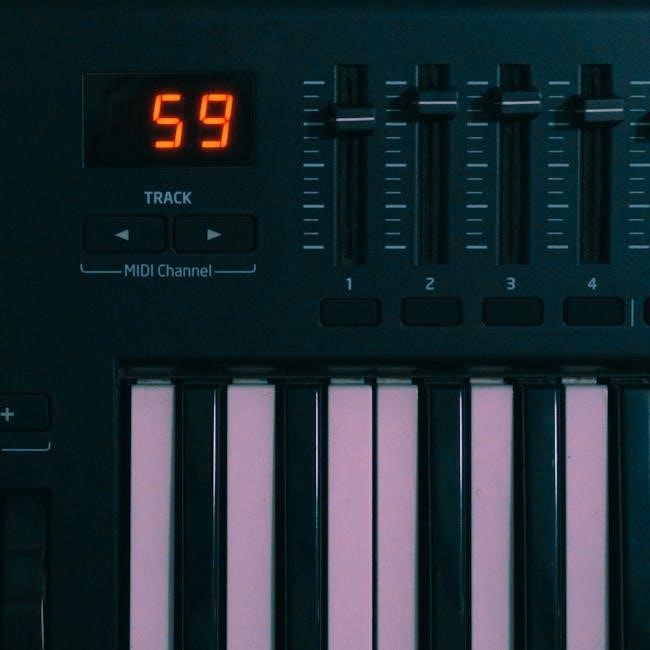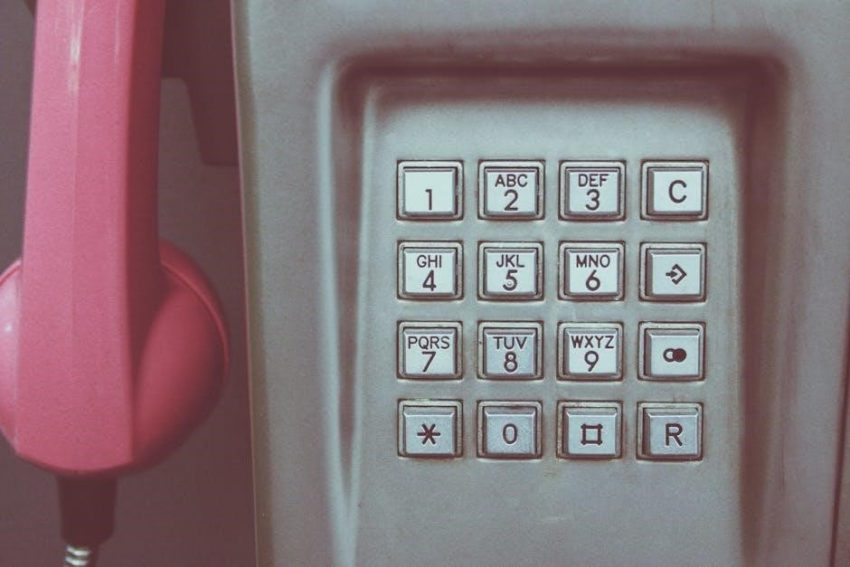Converting mixed numbers to improper fractions is a fundamental math skill that involves transforming a mixed number into an improper fraction. This process is essential for various mathematical operations and simplifies calculations by providing a single fractional representation. Proper understanding and practice of this conversion method are crucial for mastering fraction-related concepts in mathematics. Worksheets and online resources offer comprehensive practice, ensuring proficiency and confidence in converting mixed numbers to improper fractions effectively.
What are Mixed Numbers?
A mixed number is a combination of a whole number and a proper fraction. It represents a value greater than one but less than the next whole number. For example, in the mixed number 2 1/3, the “2” is the whole number, and “1/3” is the proper fraction. Mixed numbers are commonly used in real-world measurements, such as cooking or construction, where quantities often exceed whole units but aren’t enough to make another whole. They provide a clear and intuitive way to express such values, making them easier to understand and work with in practical scenarios. Mixed numbers can be converted to improper fractions for mathematical operations that require a single fractional representation.
- Example: 2 1/3 (whole number + proper fraction).
- Used for quantities greater than one but less than the next whole number.
- Common in real-world applications like recipes and measurements.
What are Improper Fractions?
An improper fraction is a fraction where the numerator is greater than or equal to the denominator. This type of fraction represents a value of one or more. Unlike mixed numbers, improper fractions consist of a single fractional part without a separate whole number. They are particularly useful in mathematical operations, such as addition and subtraction, as they eliminate the need to separate whole numbers and fractions. Improper fractions can be converted back to mixed numbers by dividing the numerator by the denominator and expressing the remainder as a proper fraction. For example, the improper fraction 7/3 can be rewritten as the mixed number 2 1/3. This flexibility makes improper fractions a powerful tool in various mathematical contexts.
- Definition: Numerator ≥ denominator (e.g., 7/3).
- Represents values of one or more.
- Useful in mathematical operations requiring single fractional values.
Why Convert Mixed Numbers to Improper Fractions?
Converting mixed numbers to improper fractions simplifies mathematical operations like addition, subtraction, and multiplication. Proper fractions are easier to work with in calculations, eliminating the need to separate whole numbers. This conversion is essential in various real-world applications, such as cooking and construction, where measurements may require precise adjustments. It also prepares students for higher-level mathematics, like algebra and calculus, by providing a consistent fractional form. Worksheets offer structured practice, helping students master this fundamental skill and understand the relationship between whole numbers and fractions, which is vital for problem-solving and critical thinking in mathematics.
- Simplifies mathematical operations.
- Prepares for higher-level math.
- Reinforces foundational concepts.

The Step-by-Step Process of Conversion
Converting mixed numbers to improper fractions involves four key steps: identifying the whole number and fraction, multiplying the whole number by the denominator, adding the numerator, and writing the improper fraction.
- Identify the whole number and fraction.
- Multiply the whole number by the denominator.
- Add the numerator to the product.
- Write the improper fraction.
Step 1: Identify the Whole Number and Fraction
The first step in converting a mixed number to an improper fraction is to identify the whole number and the fractional part separately. A mixed number consists of a whole number and a proper fraction. For example, in the mixed number (2 rac{1}{3}), the whole number is 2, and the fraction is ( rac{1}{3}). This step is crucial because it sets the foundation for the multiplication and addition that follow. By clearly distinguishing the whole number from the fractional part, students can avoid confusion and ensure accuracy in their calculations. Properly identifying these components also helps in understanding how the whole number relates to the fraction, making the subsequent steps more straightforward. This foundational step is often practiced in worksheets to build confidence and proficiency in handling mixed numbers and improper fractions effectively.
Step 2: Multiply the Whole Number by the Denominator
After identifying the whole number and the fraction, the next step is to multiply the whole number by the denominator of the fractional part. This multiplication converts the whole number into a value that can be easily combined with the numerator. For example, in the mixed number (2 1/3), the whole number 2 is multiplied by the denominator 3, resulting in 6. This step is critical because it prepares the whole number for addition to the numerator, ensuring the overall value of the mixed number is preserved when converted to an improper fraction. Worksheets often include this step to help students practice and master the multiplication process, which is essential for accurate conversions. This foundational arithmetic skill is vital for progressing in fraction-related math problems.
Step 3: Add the Numerator to the Product
After obtaining the product from Step 2, the next step is to add the numerator of the fractional part to this product. This addition combines the whole number and the fraction into a single numerical value. For instance, using the mixed number (2 1/3), after multiplying the whole number (2) by the denominator (3) to get 6, you then add the numerator (1), resulting in 7. This sum becomes the new numerator of the improper fraction. It is crucial to ensure that the denominator remains unchanged during this process. Worksheets often emphasize this step to help students understand how the whole number and fraction are merged. This step is essential for maintaining the original value of the mixed number while converting it into an improper fraction. Regular practice with worksheets can help students master this arithmetic operation seamlessly.
Step 4: Write the Improper Fraction
Once the sum from Step 3 is calculated, the final step is to write the improper fraction by placing the resulting numerator over the original denominator. For example, if the mixed number is (2 rac{1}{3}), after adding the numerator (1) to the product (6), the result is 7. The improper fraction is then written as ( rac{7}{3}). This step is crucial as it finalizes the conversion process, ensuring the new fraction accurately represents the original mixed number. It is important to double-check that the denominator remains unchanged throughout the conversion. Worksheets often include exercises that focus on this step to help students become proficient in forming improper fractions correctly. Regular practice ensures accuracy and confidence in converting mixed numbers to improper fractions effectively.

Examples of Converting Mixed Numbers to Improper Fractions
For instance, converting 2 1/3 involves multiplying 2 by 3, adding 1, resulting in 7/3. Similarly, 4 2/5 becomes 22/5 after following the same steps.
Example 1: Converting 2 1/3 to an Improper Fraction
To convert the mixed number 2 1/3 to an improper fraction, follow these steps:
- Multiply the whole number (2) by the denominator (3):
2 × 3 = 6. - Add the numerator (1) to the product:
6 + 1 = 7. - Keep the denominator the same (3) and write the improper fraction:
7/3.
Therefore, 2 1/3 as an improper fraction is 7/3. This method ensures accurate conversion, making mathematical operations easier. Regular practice with worksheets helps master this skill effectively.
Example 2: Converting 4 2/5 to an Improper Fraction
To convert the mixed number 4 2/5 to an improper fraction, follow these steps:
- Multiply the whole number (4) by the denominator (5):
4 × 5 = 20. - Add the numerator (2) to the product:
20 + 2 = 22. - Keep the denominator the same (5) and write the improper fraction:
22/5.
Therefore, 4 2/5 as an improper fraction is 22/5. This process ensures that the value remains consistent while providing a single fractional representation, which is often necessary for mathematical operations. Regular practice with worksheets helps in mastering this conversion skill effectively.

Benefits of Using Worksheets for Practice
Worksheets provide structured, comprehensive practice, helping students master converting mixed numbers to improper fractions. They offer clear examples, varied problems, and reinforcement of mathematical concepts, ensuring effective learning and skill mastery.
Why Worksheets are Effective for Learning
Worksheets are effective for learning as they provide structured and focused practice, which helps students grasp mathematical concepts like converting mixed numbers to improper fractions. They offer a clear format with specific examples and exercises, making it easier for students to understand and apply the conversion process. Worksheets also allow for repetition, which reinforces learning and builds confidence. Additionally, they cater to different learning styles by including visual aids and varied problem sets, ensuring comprehensive understanding. Teachers and parents can use worksheets to track progress, identify areas needing improvement, and provide targeted support. Overall, worksheets are a valuable tool for mastering fraction conversion skills in an organized and efficient manner.
How Worksheets Reinforce Mathematical Concepts
Worksheets reinforce mathematical concepts by providing hands-on practice that solidifies understanding and builds proficiency. They allow students to apply what they’ve learned in a structured and organized manner, helping to embed skills like converting mixed numbers to improper fractions. The repetitive nature of worksheet exercises strengthens memory recall and improves accuracy. Additionally, worksheets often include visual aids and real-world applications, making abstract concepts more relatable. They also offer immediate feedback through answer keys, enabling students to identify and correct mistakes. With varied problem sets, worksheets ensure comprehensive understanding and prepare students for more complex mathematical challenges. Regular use of worksheets fosters confidence and fluency, making them an indispensable tool for reinforcing mathematical concepts in a practical and effective way.

How to Create a Converting Mixed Numbers to Improper Fractions Worksheet
Designing an effective worksheet involves clear instructions, step-by-step examples, and ample practice problems. Start with a clean layout, ensuring each problem is easy to read and work on. Provide space for calculations and include visual aids like fraction bars to enhance understanding. Offer a variety of problems, ranging from simple to complex, to cater to different learning paces. Include an answer key for self-assessment and consider adding tips to avoid common mistakes, such as forgetting to keep the denominator consistent. Keep the design simple for easy printing and ensure the worksheet is engaging and educational for students.
Designing the Layout of the Worksheet
When creating a worksheet for converting mixed numbers to improper fractions, a clear and organized layout is essential. Start with a clean design, using readable fonts and ample spacing to avoid clutter. Include a title at the top, such as “Converting Mixed Numbers to Improper Fractions,” followed by instructions or examples to guide students. Use a consistent format for presenting mixed numbers, ensuring the whole number and fraction are clearly separated. Provide space for calculations and answers, either through lines or boxes, to help students stay organized. Incorporate visual aids like fraction bars or diagrams to enhance understanding. Ensure the worksheet is printer-friendly, with proper margins and alignment. Including a section for answers or a key at the end can also facilitate self-assessment and feedback. A well-designed layout promotes focus and makes the learning process more effective;
Including a Variety of Problems
Including a variety of problems in a worksheet ensures that students are exposed to different scenarios, helping them build a comprehensive understanding of converting mixed numbers to improper fractions. Start with simple problems involving small whole numbers and denominators, then gradually introduce larger numbers and more complex fractions. Incorporate both proper and improper fractions to reinforce the concept of fractional relationships. Word problems, such as real-world applications, add context and practical relevance. Mixing problems that require conversion from mixed to improper and vice versa enhances versatility. Ensure problems vary in difficulty to cater to different learning paces and abilities. This diverse approach prevents students from memorizing steps without understanding and helps them develop problem-solving skills tailored to various mathematical situations. Variety keeps the practice engaging and effective, fostering a deeper grasp of the concept.
Adding Visual Aids for Better Understanding
Adding visual aids to worksheets enhances the learning experience by providing students with a clear and intuitive way to grasp the concept of converting mixed numbers to improper fractions. Diagrams, such as fraction bars or pie charts, help visualize the relationship between whole numbers and fractional parts. Images of real-world objects, like pizzas or cakes divided into slices, make the abstract concept more tangible. Step-by-step illustrations guide students through the conversion process, breaking it down into manageable parts. Color-coding can highlight key components, such as the whole number, numerator, and denominator, making it easier for students to focus on each element. Visual representations of improper fractions alongside their mixed number counterparts reinforce the connection between the two forms. By incorporating these aids, worksheets become more engaging and effective, catering to visual learners and improving overall understanding and retention of the material.

Using the Worksheet for Classroom Instruction
Worksheets are valuable tools for teaching conversion skills. Teachers can print, download, or save them for classroom use, incorporating them into lesson plans, group work, or as practice assignments.
Integrating Worksheets into Lesson Plans
Worksheets on converting mixed numbers to improper fractions can seamlessly integrate into lesson plans, serving as valuable teaching tools. Teachers can print, download, or save these resources for classroom use, making them ideal for group work, scaffolding, or learning centers. They can be used as practice assignments, tests, or supplements to enhance understanding. These worksheets are designed to align with curriculum goals, providing structured exercises that match the lesson’s objectives. Educators can incorporate them at various stages, such as after introducing the concept or as revision material. The clear format and step-by-step problems make them easy to follow, ensuring students grasp the conversion process effectively. Additionally, worksheets with answer keys allow teachers to assess student progress and provide timely feedback, reinforcing learning outcomes.
Encouraging Peer Review and Collaboration
Peer review and collaboration are effective strategies to enhance learning when using worksheets for converting mixed numbers to improper fractions. Students can work in pairs or small groups, sharing their solutions and explaining their reasoning. This fosters a deeper understanding of the conversion process and promotes problem-solving skills. Peer discussions help identify common mistakes and reinforce correct methods. Teachers can facilitate this by encouraging students to compare their answers and provide constructive feedback. Collaborative activities also build confidence and teamwork, creating a supportive learning environment. By engaging with peers, students can clarify doubts and gain new insights, making the worksheet exercises more interactive and beneficial for overall mathematical development.
Providing Feedback and Assessment
Providing feedback and assessment is crucial when using worksheets for converting mixed numbers to improper fractions. Teachers can use these worksheets as a tool for formative assessment, identifying areas where students may need additional support. Immediate feedback helps students correct mistakes and understand the correct methods for conversion. Assessments can be conducted regularly to track progress and ensure mastery of the skill. Feedback should be clear, constructive, and specific, guiding students to improve their understanding. Worksheets with answer keys allow for self-assessment, enabling students to verify their work independently. Regular evaluation helps reinforce learning and builds confidence in converting mixed numbers to improper fractions effectively. This process supports overall mathematical development and prepares students for more complex fraction-related tasks.

Common Mistakes to Avoid
Mistakes in Multiplication and Addition
A common error is incorrect multiplication of the whole number by the denominator or adding improperly. For example, in converting 2 1/3, students might miscalculate 2×3+1, resulting in 7/3 correctly, but errors like adding before multiplying can occur, leading to wrong improper fractions like 2+1×3=5/3 instead of 7/3. Such mistakes highlight the need for careful step-by-step execution to ensure accuracy in conversions.
Common errors occur in multiplication and addition steps. For instance, when converting 2 1/3 to an improper fraction, students might incorrectly calculate 2×3+1 as 6+1=7, resulting in 7/3. However, mistakes like adding before multiplying can lead to errors, such as 2+1×3=5/3 instead of 7/3. Proper step-by-step execution is essential to avoid such inaccuracies. Ensuring the whole number is multiplied by the denominator first and then added to the numerator guarantees correct improper fractions. Careful attention to the sequence of operations helps prevent these common pitfalls in the conversion process. Regular practice and review of the steps can significantly reduce errors and improve overall proficiency in converting mixed numbers to improper fractions.
Forgetting to Keep the Denominator the Same
One common mistake when converting mixed numbers to improper fractions is forgetting to keep the denominator unchanged. The denominator remains the same throughout the conversion process, while only the numerator is altered. For example, when converting 2 1/3, the denominator 3 stays the same, and the numerator becomes 7, resulting in 7/3. If the denominator is inadvertently changed, the fraction loses its original value, leading to incorrect results. This error often occurs due to lack of attention or misunderstanding of the process. Emphasizing the importance of maintaining the denominator during conversion helps students avoid this pitfall. Practice with worksheets can reinforce this concept and ensure accuracy in future calculations. Consistent reminder and review of this step are essential for mastering the skill effectively.

Advanced Tips for Mastering the Concept
Practice with real-world applications and use online resources for additional exercises. Reinforce understanding by converting mixed numbers to improper fractions in practical scenarios, ensuring long-term mastery and confidence in the skill.
Practicing with Real-World Applications
Practicing with real-world applications enhances understanding and retention of converting mixed numbers to improper fractions; Use scenarios like cooking, where recipes often require adjusting ingredient quantities. For example, doubling a recipe that calls for 2 1/3 cups of flour involves converting to an improper fraction (7/3 cups) for precise measurement. Similarly, construction projects may require converting mixed numbers to improper fractions for accurate material calculations. Encourage students to identify situations in their daily lives where this skill is useful, such as dividing resources or measuring lengths. Applying the concept in practical contexts makes learning more engaging and relevant, helping students grasp the importance of mastering the conversion process.
Using Online Resources for Additional Practice
Online resources provide a wealth of opportunities for additional practice in converting mixed numbers to improper fractions. Websites like Math-Drills.com offer free, downloadable worksheets in PDF format, designed to help students master this essential math skill. These resources often include a variety of problems, such as converting mixed numbers to improper fractions and vice versa, ensuring comprehensive practice. Many worksheets are specifically tailored for different grade levels, making them suitable for both classroom and homeschooling environments; Additionally, interactive tools and guided examples are available to support learning. Utilizing these online materials allows students to practice at their own pace, reinforcing their understanding and improving their proficiency in fraction conversions. Regular use of these resources can significantly enhance math fluency and confidence.
Mastering the conversion of mixed numbers to improper fractions is a vital math skill. Worksheets and online resources provide ample practice, ensuring proficiency and confidence in fraction operations.
Summarizing the Importance of the Skill
Converting mixed numbers to improper fractions is an essential skill in mathematics, as it simplifies various operations like addition, subtraction, and comparison of fractions. This skill is fundamental for understanding more complex mathematical concepts, such as algebra and geometry. Proper conversion ensures accuracy in calculations and enhances problem-solving abilities. Worksheets and practice exercises play a crucial role in reinforcing this concept, making it easier for students to apply it in real-world scenarios. By mastering this skill, learners build a strong foundation for advanced math, demonstrating the importance of consistent practice and dedication.
Encouraging Continued Practice and Mastery
Consistent practice is key to mastering the conversion of mixed numbers to improper fractions. Regularly working through worksheets and online exercises helps reinforce the concept and builds confidence. Encourage learners to explore various practice formats, such as PDF worksheets, interactive tools, and real-world applications, to keep the process engaging. Setting achievable goals and celebrating progress can motivate students to continue improving their skills. Additionally, incorporating visual aids and peer review into practice sessions can enhance understanding and retention. By fostering a growth mindset and providing ample opportunities for practice, learners can achieve long-term mastery of this essential math skill.

